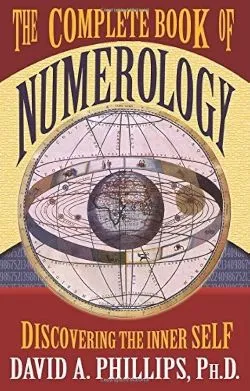
What is it that makes some spiritual, symbolic systems seem more “true” than others? Why am I totally onboard with Jungian archetypes and astrological natal charts but not numerology and crystal vibrations? It’s hard to tell, but this book didn’t do a great deal to alleviate my skepticism.
From the get-go, David Phillips claims that the contents of this book are received wisdom that have been passed from teacher to student from the time of Pythagoras. Unfortunately, it’s not true. It is true that Pythagoras was all about numerology and numerical systems: his innovations in mathematics were an attempt to tap into that source. It’s a bummer that we don’t find it here.
Instead, we get introduced to a number of systems to calculate numerical birth charts (divided into the mind, soul, and body planes), ruling numbers, life paths, and even connections between numerology and astrology. Perhaps unsurprisingly, Phillips discussion on this last front was wholly ineffective.
The system of ruling numbers is something that I had previously read in The Life You Were Born to Live: A Guide to Finding Your Life Purpose, and this book echoes that one, meaning that it isn’t just bullshit invented by one guy. There’s a club of them, at least, and the ruling numbers seemed more compelling than some of the other contents.
One piece of the book, though, I did find highly interesting: that of pyramidal life cycles. The idea here is that based on your date of birth, you can calculate four life paths for different stages of your life, starting at ages 27-34 and continuing until death.
Cool! And now I know how to interpret it. Mine says, essentially, to focus on spirituality and intuition for the next 17 years, then to move onto material progress, and finally the intellect. Great! Good to know! It’s fun and all, but not really helpful.
There are some die-hard believers in numerology out there. I’m not one of them, and this book didn’t help convince me.